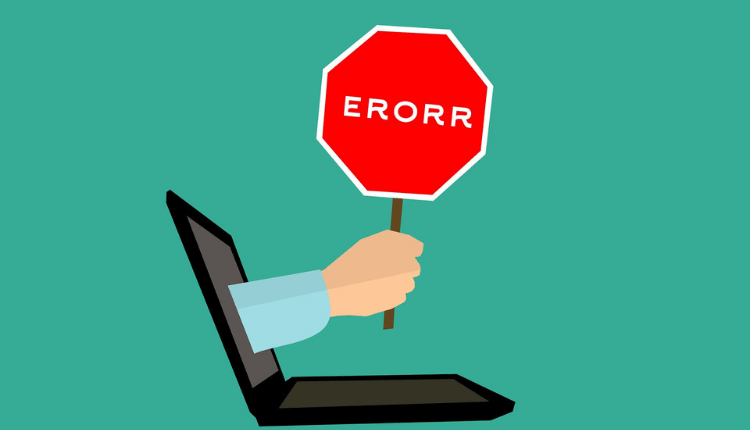An Editor-in-Chief’s Take: Addressing Post Acceptance/Publication Changes of Manuscripts

Requests to make alterations to manuscripts after they have been accepted is very rare. Editors do not maintain a systematic record of such cases. Therefore it is difficult to say exactly how often this happens or what is most common. However, from my experience, the number I receive is probably in single figures for approximately 300 manuscripts accepted annually at the Journal of Advanced Nursing. Nevertheless, I have been editing journals for many years and currently edit two journals; therefore, I have a total experience of many requests over the years for changes to manuscripts after acceptance.
Types of Requests
Requests to make changes to manuscripts after they have been accepted include:
- Changes in authorship including addition of authors, removal of authors, changes to the order of authorship and changes to the corresponding author of a manuscript
- Corrections to manuscripts arising from errors uncovered by authors. This can include the replacement of tables or figures, addition of references and minor and major alterations to manuscript wording.
- Withdrawal of manuscripts
- Retraction of manuscripts
The above are not listed in order of frequency. Additionally, in journals that adhere to the ethical standards of the Committee on Publication Ethics (COPE), editors are obliged to investigate requests for changes to authorship.
Changes to authorship fall under the following areas:
- Addition of authors before publication
- Removal of authors before publication
- Addition of authors after publication
- Removal of authors after publication
In my experience, I have only dealt with situations where there have been requests to add authors prior to publication and after publication. Following the COPE guidelines, the corresponding author should should explain the reason for request to the editor. Further, the editor must be convinced that the reasons are justified. To be included as an author at any stage in the process each must agree that they meet the authorship criteria of the International Committee of Medical Journal Editors (ICMJE) which states that they should have made:
- Substantial contributions to the conception or design of the work; or the acquisition, analysis, or interpretation of data for the work; AND
- Drafting the work or revising it critically for important intellectual content; AND
- Final approval of the version to be published; AND
- Agreement to be accountable for all aspects of the work in ensuring that questions related to the accuracy or integrity of any part of the work are appropriately investigated and resolved.
If the editor is convinced that the additional author meets the above criteria, then the agreement of all the existing authors must be sought before the addition can be made.
How do Journals Deal with Such Requests?
Changes to Authorship
Requests for the addition of an author prior to publication are relatively straightforward to manage compared with requests after publication. Requests to add authors prior to publication usually emanate from within the existing team of authors. But when requests are made after publication, they rarely emanate from within the existing team but rather from a disaffected colleague of the team who considers that they merited authorship but were not appropriately credited.
This is not an easy situation to manage; nevertheless, the request must be taken seriously by the editor who must verify with the person requesting addition to justify their authorship based on the ICMJE guidelines. If convinced, the editor must contact the corresponding author to alert them of the request and ask for their perspective. Moreover, if convinced that there is a case for adding the author, the agreement of all authors must be sought. However, it should be noted that only under very exceptional circumstances would the additional author be added to the by-line of the published article. Once an article is published and has a digital object identifier, it is not permitted to make any changes. However, if the article is listed on PubMed then a change to the by-line can be made there.
Changes to Manuscript
Otherwise, requests for changes to manuscripts – which are usually based on errors spotted by the authors – after acceptance either before or after publication are relatively straightforward. However, the consequences as a result of these requests will differ. If the manuscript is accepted but not published, then the accepted version of the manuscript can be altered to accommodate the corrected material prior to the accepted version going to production. It may also be possible to accommodate changes to the manuscript at the proof stage during the process of correcting the proof.
If, however, an error is spotted after publication – as outlined above – no changes can be made to the published version. However, it is necessary to issue a corrigendum or an erratum. Corrigenda and errata are very similar and their use depends on the practices of a particular publisher. However, the nature of these indications of error is that they are published in the journal and, with the advent of online publishing, they may be linked to the published version of the article to be taken into account by readers of the article. Only very rarely do authors request withdrawal of a manuscript once it is accepted but such requests are usually met, provided all the authors agree to the withdrawal.
Errors Spotted by Readers
Beyond what is outlined above, errors may be spotted in published articles by readers other than the author. In such cases, the editor must consult the corresponding author for a view on what has been raised. Further, if necessary, agree the wording of a corrigendum or erratum that meets the agreement of the author and reader.
The most serious situations regarding requests for changes to published articles are when a reader reports that an article is:
- Plagiarised or duplicated
- Contains fabricated or falsified data
- Has fatal errors that the authors cannot correct or explain in an erratum or corrigendum.
If these cases are upheld, then the article may need to be retracted. Retraction is a lengthy process and the relevant COPE guidelines need to be followed until a conclusion is reached. If the journal decides to retract an article, then the article remains available online but published alongside it will be a retraction notice explaining the nature of the retraction. The article may have a watermark added to indicate that it is a retracted article.
Prof. Roger Watson Ph.D. RN FRCP Edin FRCN FAAN
Roger Watson is the Editor-in-Chief of Journal of Advanced Nursing and Editor of Nursing Open and an Editorial Board member of the WikiJournal of Medicine. He has honorary and visiting positions in China, Hong Kong, and Australia. He is Professor of Nursing, University of Hull, UK and was a member of the UK 2008 Research Assessment Exercise sub-panel for Nursing and Midwifery and a 2014 Research Excellence Framework sub-panel for Allied Health Professions, Dentistry, Nursing and Pharmacy. In 2016 he was inducted into the Sigma Theta Tau International Nurse Researcher Hall of Fame.










